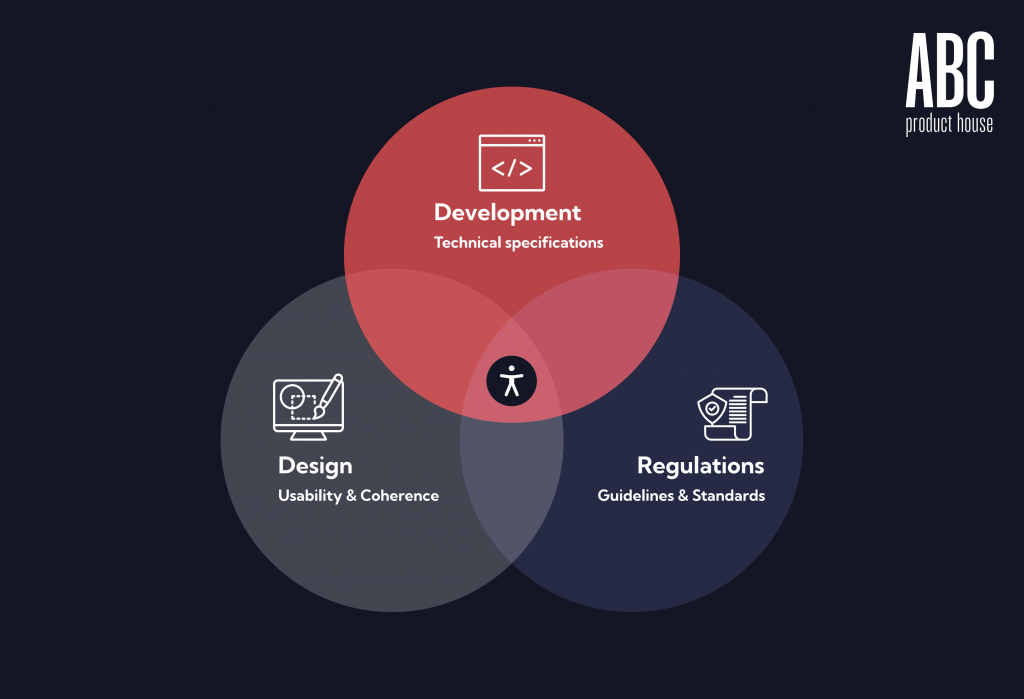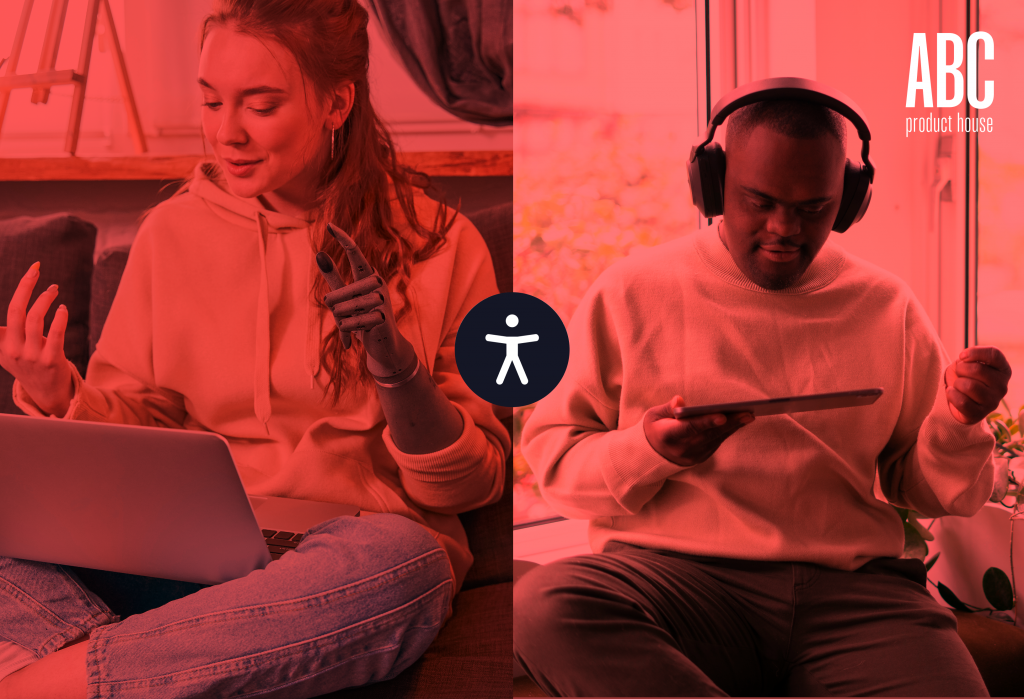Der Beitrag Understanding Accessibility: A Holistic Approach erschien zuerst auf Product House.
]]>
Accessibility is a critical component in building an inclusive society, ensuring that individuals of all abilities and disabilities have equal access to information, services, and opportunities. As we navigate through an increasingly digital world, the concept of accessibility extends beyond physical spaces, encompassing virtual environments, websites, and digital content. This article aims to provide a comprehensive understanding of accessibility, highlighting its significance, foundational principles, and practical implementation strategies. But first, let's start by defining what a holistic approach is.
A holistic approach refers to addressing the entire system or entity, rather than focusing on its individual parts in isolation. This approach considers all aspects of a situation, including its physical, mental, emotional, social, and environmental components, recognizing that they are all interconnected and affect one another. In the context of accessibility, a holistic approach means considering all facets of accessibility, ensuring that environments, systems, products, and services are designed and implemented to be inclusive and usable by all people, regardless of their abilities or disabilities. Having understood this point, let's continue with the essence of accessibility.
Accessibility is rooted in the idea of creating equal opportunities for all, serving as a bridge to inclusion and participation. It is recognized as a fundamental human right, upheld by international laws and standards. While the immediate thought might go to individuals with disabilities, accessibility also benefits the elderly, non-native speakers, and those with temporary impairments, ensuring a comprehensive approach to inclusion. The relationship between accessibility, inclusion, and diversity is intertwined. An inclusive society values and embraces diversity, ensuring that all members, irrespective of their abilities, are fully included. Accessibility is a pivotal element in this equation, acting as a catalyst to remove barriers and promote full participation.
Principles and Standards
A holistic approach to accessibility requires an understanding of its core principles and standards. Equitable use ensures that environments and products are accessible and appealing to individuals with diverse abilities. Flexibility in use accommodates a wide spectrum of preferences and abilities. Simplicity and intuitiveness in design ensure ease of understanding for all users. Perceptible information guarantees effective communication regardless of the user’s sensory abilities. A tolerance for error minimizes risks and adverse consequences of unintended actions. Low physical effort demands efficient and comfortable use, reducing fatigue. Lastly, appropriate size and space for approach and use accommodate users of all body sizes, postures, or mobility levels.
To facilitate the practical application of accessibility, various global guidelines and standards have been established, with the Web Content Accessibility Guidelines (WCAG) by the World Wide Web Consortium (W3C) standing out as a prominent example. These guidelines provide comprehensive criteria to ensure digital content is accessible, with a focus on four principles: Perceivable, Operable, Understandable, and Robust.
Strategy
Implementing accessibility requires a comprehensive strategy to ensure that all aspects of an environment, system, product, or service are designed to be inclusive and usable by everyone, regardless of their abilities or disabilities. It is important to evaluate your current practices, environments, and systems to identify areas that need improvement. This can be done through self-assessments, user testing with people with disabilities, or hiring accessibility consultants. The implementation of accessibility requires concerted efforts across various domains. In physical spaces, it is crucial to comply with accessibility standards, providing necessary amenities like ramps, elevators, and accessible restrooms, alongside clear and visible signage. Adequate lighting and minimized background noise cater to those with sensory impairments.
In the digital realm, websites and content should be designed with accessibility in mind, adhering to WCAG guidelines to ensure usability for individuals with diverse needs. This includes providing alternative text for images, captions for videos, and ensuring interactive elements are keyboard accessible. Communication should be inclusive, utilizing plain language and offering materials in multiple formats. Accessible communication channels, such as text relay services for individuals with hearing impairments, ensure that everyone can engage and participate.
Education and training on inclusive practices are vital for staff and stakeholders, fostering a culture of inclusion and continuous improvement. Policy and governance play a crucial role, with the development and implementation of accessibility policies and mechanisms for monitoring and evaluation ensuring accountability and progress.
Benefits of a Holistic Approach
Embracing a holistic approach to accessibility results in numerous benefits, creating a more inclusive and diverse community and promoting equal opportunities. Accessible environments and content enhance the user experience for all, often leading to more user-friendly and intuitive designs. Additionally, the challenge of designing for diverse needs can drive innovation, resulting in creative and flexible solutions.
Creating an accessible world also aligns with the principles of universal design, aiming to make environments, products, and services accessible to the widest range of people without the need for adaptation. This approach not only benefits individuals with disabilities but also contributes to the overall functionality and efficiency of systems and services.
Furthermore, accessibility promotes social inclusion and equity. When individuals with disabilities can access education, employment, and social activities on an equal basis with others, it leads to a more inclusive and equitable society. This, in turn, fosters a sense of belonging and contributes to the overall well-being and productivity of all community members.
Our Final Thoughts
A comprehensive understanding of accessibility encompasses physical, digital, communication, and organizational aspects, ensuring an inclusive environment for all members of society. By adhering to accessibility principles and implementing practical strategies, we can remove barriers and foster a world where everyone has an equal opportunity to participate and thrive. The journey towards accessibility is a continuous one, but with dedication and collaboration, we can create an accessible and inclusive world for all. It is our collective responsibility to advocate for and implement accessibility measures, ensuring that no one is left behind in our pursuit of an inclusive society.
If you're interested in learning more about how we can help you design accessible products, please don't hesitate to get in touch with us today. Our team of experts is standing by to answer any questions you may have and to provide you with the support and guidance you need to create truly accessible products.
Together, we can create a world where everyone has the opportunity to participate fully in society. So why wait? Contact us today to learn more about our services and how we can help you create products that are accessible to all.
Der Beitrag Understanding Accessibility: A Holistic Approach erschien zuerst auf Product House.
]]>Der Beitrag The ABC of “why we care and you should care about accessible products” erschien zuerst auf Product House.
]]>
There has been a growing awareness about the importance of accessibility in products and services in the last years. Accessibility refers to the design and development of products that can be used by people with disabilities or impairments. This can include physical disabilities, visual impairments, hearing impairments, and cognitive impairments. But why accessibility is important, why we care about it, and why you should care about it too.
Accessibility is a fundamental human right. People with disabilities have the same rights as everyone else to access products and services that are essential for daily life. For example, people with mobility impairments may require products that are designed to be easily used with one hand, or that have larger buttons and controls. People with visual impairments may require products that have audio output, or that have high contrast text and icons. By designing products that are accessible to all, we can ensure that everyone has the ability to participate fully in society.
In addition to being a fundamental human right, accessibility also makes good business sense. Products that are accessible to people with disabilities have the potential to reach a wider audience. According to the World Health Organization, there are over one billion people in the world with disabilities. This represents a significant market opportunity for businesses that design products that are accessible to all.
Accessibility can also improve the user experience for all customers. For example, captions on videos can help people with hearing impairments to understand the content, but they can also help people who are watching the video in a noisy environment or who are not fluent in the language being spoken. Similarly, high contrast text and icons can make it easier for people with visual impairments to read content, but they can also make it easier for people who are reading content on a small screen or in bright sunlight.
At ABC, we care deeply about accessibility. We believe that everyone deserves to have access to products and services that are designed with their needs in mind. We understand that accessibility is not just a nice-to-have feature, but an essential component of good design.
We have taken a number of steps to ensure that your products are accessible to all. For example, we implement a range of accessibility features in your software products, including high contrast mode, keyboard navigation, and screen reader support, among others. We work also closely with our partners to ensure that their products are designed to be used by people with disabilities.
We believe that accessibility is not just about compliance with regulations, but about going above and beyond to create products that truly meet the needs of all users. That is why we are constantly striving to improve the accessibility of our products and services, and to raise awareness about the importance of accessibility in design.
So why should you care about accessibility? First and foremost, because it is the right thing to do. Everyone deserves to have access to products and services that are designed with their needs in mind. By designing accessible products, you can help to ensure that everyone has the ability to participate fully in society.
Also because accessibility makes good business sense. As we have already discussed, there is a significant market opportunity for businesses that design products that are accessible to all. By designing accessible products, you can reach a wider audience and improve the user experience for all customers.
And finally, because accessibility is the future of design. As the world becomes more connected and technology becomes more integrated into our daily lives, the need for accessible design will only continue to grow. By embracing accessibility now, you can position yourself and your business at the forefront of this trend and ensure that you are well-prepared for the future.
In conclusion, accessibility is an essential component of good design. At ABC Product House, we believe that everyone deserves to have access to digital products and services.
If you're interested in learning more about how we can help you design accessible products, please don't hesitate to get in touch with us today. Our team of experts is standing by to answer any questions you may have and to provide you with the support and guidance you need to create truly accessible products.
Together, we can create a world where everyone has the opportunity to participate fully in society. So why wait? Contact us today to learn more about our services and how we can help you create products that are accessible to all.
Der Beitrag The ABC of “why we care and you should care about accessible products” erschien zuerst auf Product House.
]]>